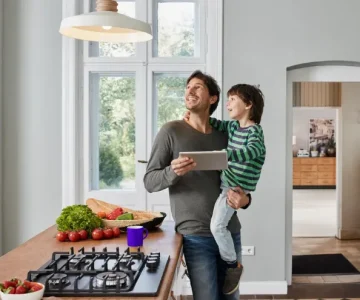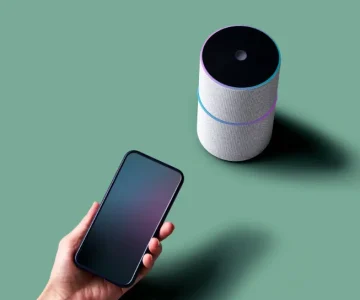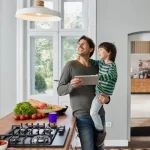Smart home technologies are transforming the way we care for seniors, offering tools that enhance both safety and independence. These innovations are making it easier for older adults to maintain their autonomy, while also providing caregivers with effective ways to monitor and support them. From fall detection devices to remote-controlled thermostats, smart home systems are seamlessly integrating into everyday life to create a safer, more comfortable environment.
Empowering Seniors Through Smart Technology
For many seniors, staying in their own home as they age is a top priority. Smart home technologies make this possible by giving them the tools they need to manage their environment more easily. Devices like voice-controlled assistants, automated lighting, and motion sensors help seniors navigate daily tasks, reduce risks, and increase their confidence at home. For caregivers, these tools offer peace of mind by enabling remote monitoring of their loved ones’ well-being, without infringing on their privacy.
Smart home devices are designed to address the physical challenges that often come with aging. For example, seniors can benefit from:
- Smart lights that illuminate paths at night, reducing the risk of falls.
- Motion sensors that alert caregivers when something unusual happens, like a fall or a deviation from a routine.
- Voice assistants that provide reminders and support, such as turning off the stove or adjusting the thermostat.
- Smart locks for added security, which can be controlled remotely.
- Video doorbells that allow for communication with visitors without needing to open the door.
These devices create a smart ecosystem in the home, enhancing both safety and comfort for seniors while easing the caregiver’s workload.
Benefits for Aging Adults
Smart home technologies provide a range of benefits that enhance the quality of life for older adults. With affordable devices like smart plugs or motion sensors, seniors can easily control their home environment. These gadgets are often simple to use and can be managed through voice commands or intuitive apps. Whether it’s checking if the iron was left on or adjusting the lighting for better visibility, these devices offer convenience and reduce the need for seniors to physically move around the house to perform simple tasks.
Beyond convenience, many of these devices also offer a sense of security. Motion sensors, for example, can discreetly monitor a senior’s activity without intruding on their privacy. If something unusual occurs, such as a fall or failure to get up from a chair, caregivers are notified right away, ensuring they can take action if necessary.
Supporting Caregivers with Technology
Smart home technologies are also invaluable for caregivers. With remote access to vital systems, caregivers can:
- Monitor a senior’s health and safety from a distance.
- Adjust home settings such as lighting, temperature, and security.
- Receive notifications when a senior’s routine is disrupted.
This remote functionality is especially beneficial when caregivers are not physically present. The technology enables caregivers to provide support while respecting the senior’s independence.
For seniors with cognitive impairments, these systems offer a layer of protection without being overly intrusive. Smart home technology can help ensure that the senior’s environment remains safe and comfortable, while caregivers can be alerted to potential issues immediately.
Enhancing Security for Seniors
Safety is a primary concern when it comes to senior living. Smart home systems help create a secure environment by providing features such as:
- Surveillance cameras that offer 24/7 monitoring and night vision capabilities.
- Smart doorbells that allow seniors to see and communicate with visitors remotely.
- Motion sensors that detect unexpected movements and alert caregivers of potential falls or emergencies.
These security features work together to create a proactive approach to safety, ensuring that help is always accessible when needed.
For seniors in areas with limited internet access, there are smart home systems that can operate with low-bandwidth networks, providing similar levels of security without relying on a Wi-Fi connection. Professional installation options are available to ensure that sensors and monitoring systems are set up correctly, providing caregivers with a detailed understanding of their loved one’s daily activities.
Smart Security Systems
Automated security systems, such as video doorbells and smart locks, are becoming essential tools for safeguarding seniors. Devices like the Nest Hello and Arlo Video Doorbell offer live video streaming, person detection, and the ability to communicate with visitors remotely. These features not only increase security but also provide peace of mind.
Smart locks, such as the Schlage Encode, offer keyless entry, which is particularly helpful for seniors who may have trouble with traditional keys. Caregivers can also manage access remotely, ensuring that only trusted individuals are allowed entry into the home.
Enhancing Comfort with Smart Devices
Smart home technologies also help seniors maintain a comfortable living environment. Voice assistants can adjust lighting, lock doors, and control home appliances with simple voice commands. Smart thermostats can regulate the temperature in the home, learning a senior’s preferences and adjusting automatically based on their routine.
Devices like smart blinds help seniors with limited mobility adjust window coverings without physical effort, while automated door openers and voice-controlled appliances reduce the need for manual intervention, making life easier for seniors.
Staying Connected: Communication Tools
Smart home devices help seniors stay connected with family and friends, which is crucial for their emotional well-being. Tools like video doorbells allow for safe communication with visitors, while smart speakers and voice assistants can provide access to entertainment, news, and social interaction.
For seniors who live alone, these technologies offer a sense of companionship and support. Voice assistants can help them schedule appointments, provide reminders, and even entertain them by playing music or audiobooks. Additionally, they can be an excellent tool for staying in touch with family members, helping to combat feelings of loneliness.
Remote Management of Home Settings
For caregivers, remote management of a senior’s home settings is a huge advantage. Using apps and smart home systems, caregivers can easily adjust settings like lighting, temperature, and security, ensuring the senior’s environment remains comfortable and secure at all times. This allows for peace of mind, even if the caregiver is miles away.
Seniors can benefit from this level of remote control as well, as they can interact with their smart home system in ways that are most comfortable for them—whether through voice commands or touchscreen interfaces.
Privacy and Safety Considerations
While the benefits of smart home devices are immense, it’s crucial to consider privacy and safety. Seniors and their caregivers should take steps to secure their systems by using strong passwords, enabling two-factor authentication, and regularly updating software. Caregivers should also educate seniors about the potential risks of online scams and how to protect their personal information.
Balancing the benefits of surveillance with privacy concerns is especially important. Any monitoring devices should be installed with careful consideration of the senior’s dignity, ensuring that their personal space and autonomy are respected while still providing the necessary safety.
Conclusion
Smart home technology offers a wealth of benefits for seniors and caregivers, from improved safety and comfort to increased independence. With the right setup, seniors can enjoy a more secure, connected, and comfortable home environment, while caregivers gain valuable tools to support their loved ones from afar. By addressing privacy concerns and ensuring proper installation and user education, transitioning to a smart home can significantly enhance the quality of life for seniors and make caregiving more manageable and efficient.





